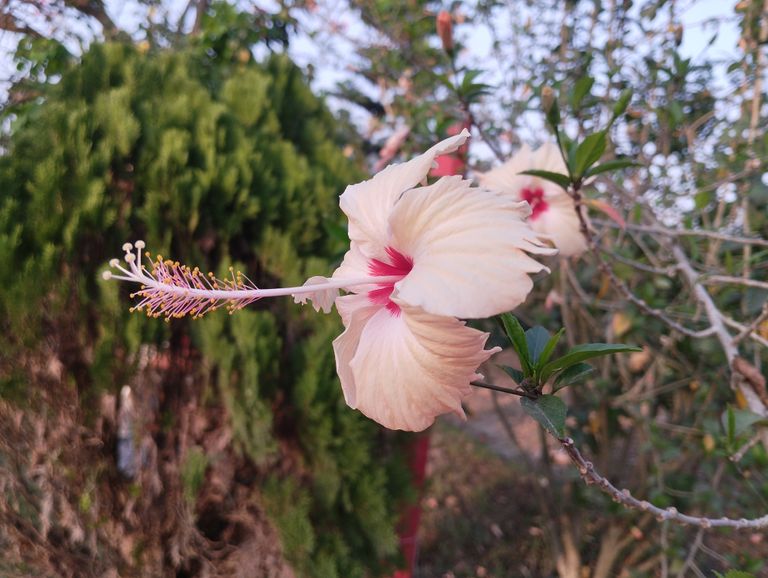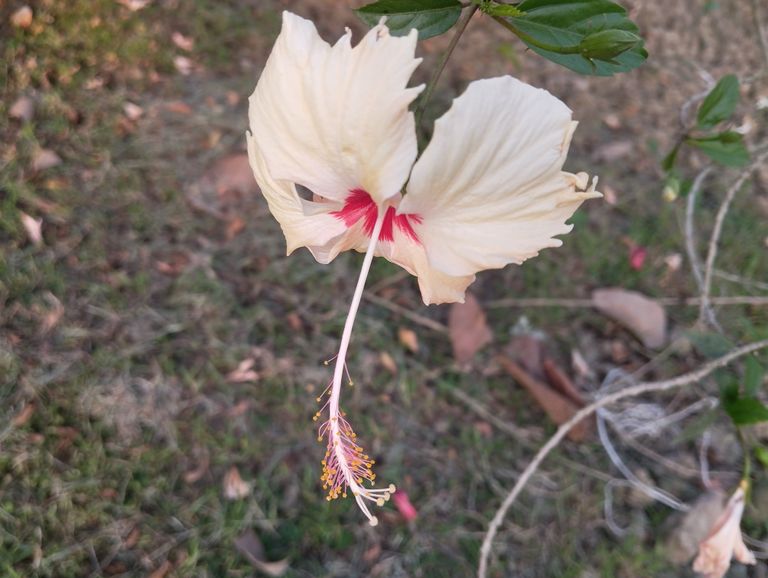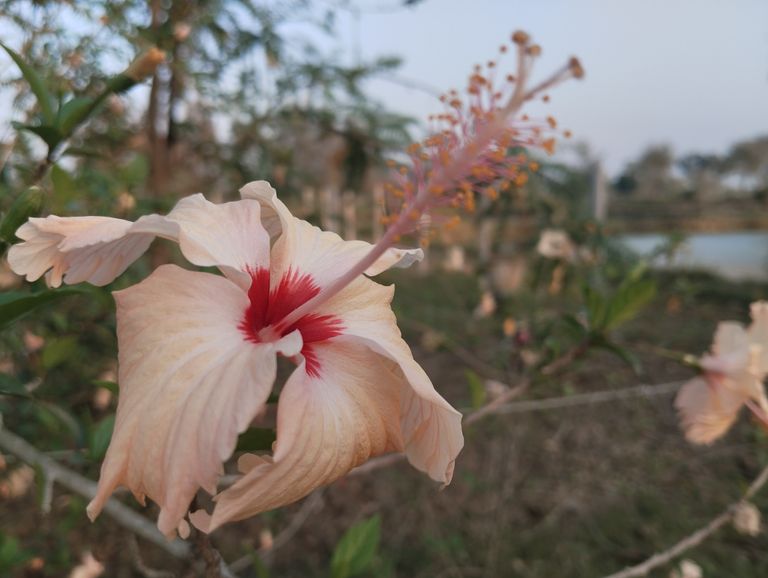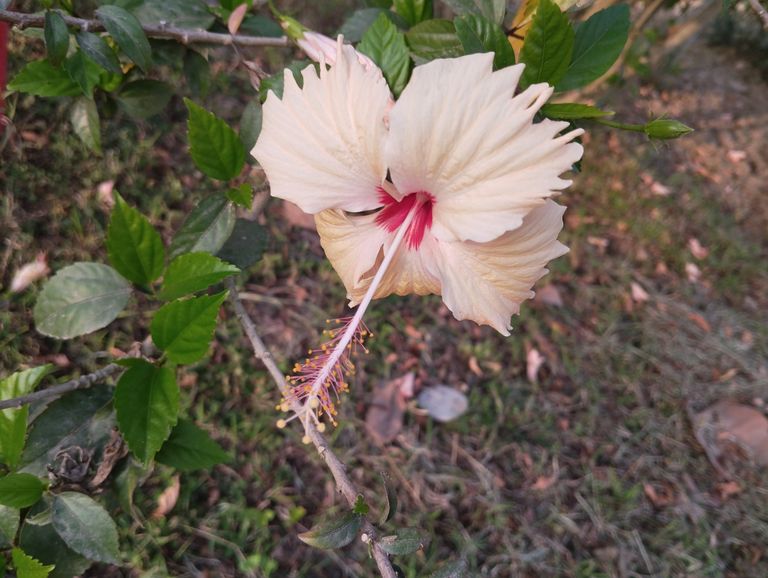
The Beauty of Hibiscus Petals.
Nature has gifted us with countless flowers, each possessing unique beauty and significance. Among them, the hibiscus stands out with its striking petals that captivate the eyes and enrich the soul. The vibrant colors, delicate texture, and medicinal properties of hibiscus petals make them a subject of admiration worldwide. In this blog, we will explore the elegance, symbolism, and benefits of hibiscus petals, revealing why this flower holds a special place in nature and human culture.
The Aesthetic Appeal of Hibiscus Petals
Hibiscus flowers are widely recognized for their large, trumpet-shaped petals, which come in a variety of colors, including red, pink, yellow, orange, and white. These petals have a velvety texture that enhances their charm, making them a favorite among flower enthusiasts. Their symmetrical shape, combined with a slightly ruffled or smooth edge, adds to their delicate yet bold appearance.
The vibrant hues of hibiscus petals are a result of natural pigments such as anthocyanins and flavonoids. These pigments not only contribute to their aesthetic appeal but also offer numerous health benefits. The rich, deep reds and bright pinks of the hibiscus create a visual feast that instantly uplifts the mood and brings a sense of freshness to any environment.
Symbolism and Cultural Significance
Hibiscus petals hold deep symbolic meanings in various cultures around the world. In many Asian and Pacific regions, the hibiscus flower represents beauty, love, and purity. In some cultures, it is a symbol of feminine energy and delicate charm.
Hawaii: The hibiscus is the state flower of Hawaii and is often worn behind the ear as a symbol of availability for romance. It is also used in traditional Hawaiian leis, symbolizing hospitality and friendship.
India: In Hindu culture, red hibiscus flowers are offered to Goddess Kali and Lord Ganesha as a symbol of devotion and divine energy.
China and Malaysia: Hibiscus flowers symbolize wealth, fame, and personal glory. They are often associated with success and positive transformations.
The Caribbean: The hibiscus is a common motif in art and fashion, representing tropical beauty and relaxation.
Medicinal and Therapeutic Benefits of Hibiscus Petals
Beyond their beauty, hibiscus petals offer a wealth of medicinal properties. They have been used in traditional medicine for centuries due to their rich composition of antioxidants, vitamins, and organic acids. Here are some notable benefits:
- Rich in Antioxidants
Hibiscus petals contain powerful antioxidants, such as anthocyanins and polyphenols, which help combat oxidative stress and reduce the risk of chronic diseases. These compounds neutralize harmful free radicals in the body, promoting overall health.
- Supports Heart Health
One of the most well-known benefits of hibiscus petals is their ability to regulate blood pressure. Hibiscus tea, made from dried petals, has been scientifically proven to lower high blood pressure and support cardiovascular health.
- Aids Digestion
Hibiscus petals have mild diuretic and laxative properties that help improve digestion. They assist in flushing out toxins from the body, promoting a healthy gut and relieving constipation.
- Boosts Immunity
Rich in vitamin C, hibiscus petals help strengthen the immune system. They aid in fighting infections, reducing inflammation, and speeding up the recovery process from colds and flu.
- Promotes Healthy Skin and Hair
The natural acids in hibiscus petals help exfoliate the skin, reducing signs of aging such as wrinkles and fine lines. Additionally, hibiscus-infused hair oils and shampoos enhance hair growth, prevent dandruff, and add natural shine to the hair.
How to Use Hibiscus Petals
There are numerous ways to enjoy the beauty and benefits of hibiscus petals. Some common uses include:
Hibiscus Tea: Dried hibiscus petals can be steeped in hot water to make a refreshing, tart-flavored tea. It is often enjoyed hot or cold with honey and lemon.
Skincare and Haircare: Hibiscus-infused oils, masks, and shampoos are popular in the beauty industry due to their nourishing properties.
Culinary Delights: In some cuisines, hibiscus petals are used in jams, syrups, and desserts, adding a tangy flavor and vibrant color.
Traditional Remedies: In Ayurvedic and herbal medicine, hibiscus extracts are used to treat ailments such as high blood pressure, fever, and digestive issues.
Conclusion
The hibiscus flower is more than just an ornamental plant; its petals embody beauty, health, and cultural significance. Whether admired for their vibrant colors, cherished for their symbolic meanings, or used for their numerous health benefits, hibiscus petals continue to captivate and enrich lives worldwide. The next time you come across a hibiscus flower, take a moment to appreciate its delicate charm and the many wonders hidden within its petals. Would you like to explore more about hibiscus-related topics, such as recipes, DIY beauty treatments, or growing tips? Let me know.

Medicinal Benefits of Hibiscus Flower
The hibiscus flower, scientifically known as Hibiscus rosa-sinensis, is not just a beautiful ornamental plant but also a powerful medicinal herb. Used in traditional medicine for centuries, hibiscus offers a wide range of health benefits. From boosting immunity to improving heart health, this vibrant flower has numerous therapeutic properties. In this blog, we will explore the medicinal benefits of hibiscus, its uses, and how you can incorporate it into your daily life.
- Nutritional Composition of Hibiscus
Hibiscus flowers are packed with essential nutrients and bioactive compounds, including:
Vitamin C – Boosts immunity and promotes healthy skin
Antioxidants – Helps combat oxidative stress
Polyphenols & Flavonoids – Contribute to heart health and anti-inflammatory effects
Iron & Minerals – Support overall body functions
- Health Benefits of Hibiscus Flower
A. Supports Heart Health
Hibiscus tea is well-known for its ability to lower blood pressure. Studies show that consuming hibiscus tea can help reduce hypertension and support cardiovascular health by:
Lowering systolic and diastolic blood pressure
Reducing LDL (bad cholesterol) and increasing HDL (good cholesterol)
Preventing heart diseases by reducing oxidative stress
B. Aids in Weight Loss
Hibiscus extracts are often included in weight loss supplements due to their fat-reducing properties. The flower helps in:
Enhancing metabolism
Reducing fat accumulation
Preventing obesity-related issues
C. Controls Blood Sugar Levels
Hibiscus is beneficial for people with diabetes as it helps regulate blood sugar levels by:
Improving insulin sensitivity
Reducing post-meal sugar spikes
Preventing complications related to diabetes
D. Boosts Liver Health
The antioxidants in hibiscus protect the liver from damage and promote its proper functioning. Regular consumption helps in:
Detoxifying the body
Reducing liver fat accumulation
Enhancing enzyme functions for better digestion
E. Improves Digestive Health
Hibiscus acts as a natural laxative and helps in:
Easing constipation
Reducing bloating
Improving gut health
F. Strengthens Immunity
Rich in vitamin C, hibiscus boosts the immune system by:
Fighting infections
Speeding up recovery from colds and flu
Reducing inflammation in the body
G. Promotes Healthy Skin and Hair
Hibiscus is widely used in skincare and haircare due to its high antioxidant and vitamin C content. It helps in:
Preventing premature aging
Treating acne and dark spots
Strengthening hair roots and promoting hair growth
- Traditional and Modern Uses of Hibiscus
A. In Ayurvedic and Traditional Medicine
In Ayurveda and traditional medicine, hibiscus is used to treat:
Cough and cold
Skin infections
Menstrual disorders
Stress and anxiety
B. In Modern Medicine and Supplements
Hibiscus extracts are used in:
Herbal teas and dietary supplements
Skincare products
Hair oils and shampoos
- How to Use Hibiscus for Health Benefits
A. Hibiscus Tea Recipe
Ingredients:
1 cup dried hibiscus petals
2 cups water
Honey or lemon (optional)
Instructions:
- Boil water and add dried hibiscus petals.
- Let it steep for 5-10 minutes.
- Strain and add honey or lemon for taste.
- Enjoy hot or cold!
B. Hibiscus Hair Mask for Hair Growth
Ingredients:
2 tbsp hibiscus powder or fresh paste
1 tbsp coconut oil
1 tbsp yogurt
Instructions:
- Mix all ingredients to form a paste.
- Apply to the scalp and leave for 30 minutes.
- Rinse with mild shampoo.
C. Hibiscus Face Pack for Glowing Skin
Ingredients:
1 tbsp hibiscus powder
1 tbsp rose water
1 tbsp yogurt
Instructions:
- Mix all ingredients into a smooth paste.
- Apply to the face and leave for 15 minutes.
- Rinse with lukewarm water.
- Precautions and Side Effects
While hibiscus is generally safe, excessive consumption may cause:
Low blood pressure (hypotension)
Allergic reactions in some individuals
Drug interactions (especially for those on blood pressure or diabetes medication)
It is always best to consult a healthcare professional before using hibiscus for medicinal purposes.
Conclusion
Hibiscus is more than just a beautiful flower; it is a powerful natural remedy with numerous health benefits. From heart health to glowing skin, this flower has been a trusted remedy in traditional medicine for centuries. Incorporate hibiscus into your diet and beauty routine to experience its full benefits naturally Would you like to try hibiscus tea or use it for skincare? Let us know in the comments.

Cultivation of Hibiscus Flower: A Complete Guide
Hibiscus, known as "Jaba Phool" in Bengali, is a popular flowering plant admired for its vibrant blooms and medicinal properties. It is widely cultivated in tropical and subtropical regions for ornamental, medicinal, and commercial purposes. This blog will provide a detailed guide on growing hibiscus flowers, including the best conditions, care tips, and potential benefits.
- Introduction to Hibiscus
Hibiscus is a genus of flowering plants belonging to the Malvaceae family. It includes hundreds of species, with some of the most popular ones being:
Hibiscus rosa-sinensis (Chinese hibiscus) – Commonly used as an ornamental plant.
Hibiscus sabdariffa (Roselle) – Used for herbal tea and medicinal purposes.
Hibiscus syriacus (Rose of Sharon) – A hardy variety suitable for temperate regions.
Hibiscus flowers come in various colors, including red, pink, white, yellow, and purple. They are easy to grow and can thrive in different environments, making them a favorite among gardeners.
- Best Climate and Soil for Hibiscus Cultivation
Hibiscus thrives in warm and humid climates, making tropical and subtropical regions ideal for its cultivation.
Climate Requirements:
Prefers temperatures between 15°C to 30°C.
Cannot tolerate extreme cold or frost.
Requires 6 to 8 hours of direct sunlight daily.
Soil Requirements:
Well-drained, loamy soil rich in organic matter is ideal.
pH level should be between 6.0 to 7.5.
Avoid waterlogging, as excess moisture can cause root rot.
- Propagation Methods
Hibiscus can be propagated using three main methods: seeds, cuttings, and grafting.
A. Propagation by Seeds:
Suitable for species that produce viable seeds.
Seeds should be soaked in warm water for 12 hours before planting.
Germination takes 1-2 weeks in a warm environment.
B. Propagation by Cuttings:
The most common method for growing hibiscus.
Select a 6-8 inch healthy stem with at least 3-4 nodes.
Dip the cut end in rooting hormone and plant it in a moist soil mix.
Keep in a warm, humid place until roots develop (usually 2-4 weeks).
C. Propagation by Grafting:
Used for hybrid and commercial varieties.
A strong rootstock is chosen, and a scion (desired hibiscus variety) is grafted onto it.
Ensures better disease resistance and faster growth.
- Planting and Care Tips
A. Planting Procedure:
- Dig a hole twice the size of the root ball.
- Place the plant carefully and cover with soil, pressing gently.
- Water immediately after planting.
B. Watering Requirements:
Hibiscus needs regular watering but should not be overwatered.
Water 2-3 times a week in normal conditions; daily watering may be required in hot summers.
Reduce watering during the winter months.
C. Fertilization:
Apply a balanced fertilizer (NPK 10-10-10) every 4-6 weeks during the growing season.
Organic fertilizers like compost and cow dung manure improve soil health.
Avoid excessive nitrogen, as it promotes leaf growth over flowering.
D. Pruning and Maintenance:
Regular pruning helps maintain plant shape and promotes flowering.
Remove dead, damaged, or weak branches to enhance air circulation.
Prune in early spring for better bloom production.
E. Pest and Disease Control:
Common pests affecting hibiscus include:
Aphids – Can be controlled using neem oil spray.
Mealybugs – Use insecticidal soap for treatment.
Spider mites – Increase humidity and spray water to reduce their population.
Diseases like powdery mildew and root rot can be prevented by maintaining proper airflow and avoiding excessive watering.
- Blooming and Harvesting
Hibiscus plants typically start flowering within 6-8 months after planting. Flowers last for one day, but the plant continues to bloom throughout the season.
For ornamental purposes, flowers can be plucked once they bloom fully.
For medicinal and commercial uses, flowers are harvested early in the morning when they are fresh.
- Uses and Benefits of Hibiscus
A. Medicinal Uses:
Hibiscus tea (from Hibiscus sabdariffa) helps lower blood pressure and improve heart health.
Used in Ayurveda to treat hair fall and improve scalp health.
Has antioxidant properties that boost the immune system.
B. Cosmetic Uses:
Used in hair oils and shampoos for strengthening hair.
Hibiscus extracts are found in skincare products for anti-aging benefits.
C. Commercial Uses:
Hibiscus is cultivated for making dyes, cosmetics, and herbal products.
The flowers are used in the production of natural food colorants.
- Common Problems and Solutions
- Conclusion
Growing hibiscus is a rewarding experience, whether for ornamental beauty, medicinal benefits, or commercial gain. By providing proper care, including the right soil, watering schedule, and pest control, you can enjoy continuous blooms throughout the year. Would you like to start your own hibiscus garden? Share your thoughts and experiences in the comments.

Medicinal Benefits of Hibiscus Flower
The hibiscus flower, scientifically known as Hibiscus rosa-sinensis, is not just a beautiful ornamental plant but also a powerful medicinal herb. Used in traditional medicine for centuries, hibiscus offers a wide range of health benefits. From boosting immunity to improving heart health, this vibrant flower has numerous therapeutic properties. In this blog, we will explore the medicinal benefits of hibiscus, its uses, and how you can incorporate it into your daily life.
- Nutritional Composition of Hibiscus
Hibiscus flowers are packed with essential nutrients and bioactive compounds, including:
Vitamin C – Boosts immunity and promotes healthy skin
Antioxidants – Helps combat oxidative stress
Polyphenols & Flavonoids – Contribute to heart health and anti-inflammatory effects
Iron & Minerals – Support overall body functions
- Health Benefits of Hibiscus Flower
A. Supports Heart Health
Hibiscus tea is well-known for its ability to lower blood pressure. Studies show that consuming hibiscus tea can help reduce hypertension and support cardiovascular health by:
Lowering systolic and diastolic blood pressure
Reducing LDL (bad cholesterol) and increasing HDL (good cholesterol)
Preventing heart diseases by reducing oxidative stress
B. Aids in Weight Loss
Hibiscus extracts are often included in weight loss supplements due to their fat-reducing properties. The flower helps in:
Enhancing metabolism
Reducing fat accumulation
Preventing obesity-related issues
C. Controls Blood Sugar Levels
Hibiscus is beneficial for people with diabetes as it helps regulate blood sugar levels by:
Improving insulin sensitivity
Reducing post-meal sugar spikes
Preventing complications related to diabetes
D. Boosts Liver Health
The antioxidants in hibiscus protect the liver from damage and promote its proper functioning. Regular consumption helps in:
Detoxifying the body
Reducing liver fat accumulation
Enhancing enzyme functions for better digestion
E. Improves Digestive Health
Hibiscus acts as a natural laxative and helps in:
Easing constipation
Reducing bloating
Improving gut health
F. Strengthens Immunity
Rich in vitamin C, hibiscus boosts the immune system by:
Fighting infections
Speeding up recovery from colds and flu
Reducing inflammation in the body
G. Promotes Healthy Skin and Hair
Hibiscus is widely used in skincare and haircare due to its high antioxidant and vitamin C content. It helps in:
Preventing premature aging
Treating acne and dark spots
Strengthening hair roots and promoting hair growth
- Traditional and Modern Uses of Hibiscus
A. In Ayurvedic and Traditional Medicine
In Ayurveda and traditional medicine, hibiscus is used to treat:
Cough and cold
Skin infections
Menstrual disorders
Stress and anxiety
B. In Modern Medicine and Supplements
Hibiscus extracts are used in:
Herbal teas and dietary supplements
Skincare products
Hair oils and shampoos
- How to Use Hibiscus for Health Benefits
A. Hibiscus Tea Recipe
Ingredients:
1 cup dried hibiscus petals
2 cups water
Honey or lemon (optional)
Instructions:
- Boil water and add dried hibiscus petals.
- Let it steep for 5-10 minutes.
- Strain and add honey or lemon for taste.